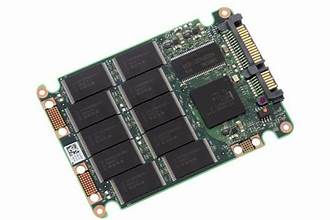2010s
SSD

The 2010s saw **major advancements in storage technology**, with a shift towards **faster, more compact, and cloud-based solutions**. **Solid-State Drives (SSDs) became mainstream**, replacing traditional Hard Disk Drives (HDDs) in many laptops and high-performance computers. SSDs, which use flash memory instead of spinning disks, provided **faster read/write speeds, lower power consumption, and increased durability**. Throughout the decade, SSD capacities grew from **hundreds of gigabytes to several terabytes**, while prices gradually dropped, making them more accessible to consumers. HDDs, however, remained popular for **large-scale data storage**, with capacities reaching **10 TB and beyond** for enterprise and personal use.
Another major trend was the decline of **optical storage**. DVDs and Blu-ray discs saw reduced usage as **digital downloads and streaming services** became the primary way to access media. Meanwhile, **USB flash drives and SD cards** continued to increase in capacity, with some reaching **1 TB by the late 2010s**, making them more practical for portable storage. The rise of **NVMe (Non-Volatile Memory Express) SSDs** in the mid-to-late 2010s significantly improved storage speeds, particularly in gaming and professional applications. These drives, connected via the PCIe interface, were much faster than traditional SATA-based SSDs, leading to their widespread adoption in high-end laptops and desktops.
Perhaps the biggest shift in storage was the **explosion of cloud computing and cloud storage**. Services like **Google Drive, Dropbox, OneDrive, and iCloud** became essential for both personal and business users, allowing easy access to files from any device. Cloud storage also enabled **collaborative work**, automatic backups, and integration with AI and big data applications. By the end of the decade, storage technology had become **faster, more efficient, and more flexible**, setting the stage for further developments in **AI-driven storage optimization, edge computing, and ultra-high-speed storage solutions** in the 2020s.